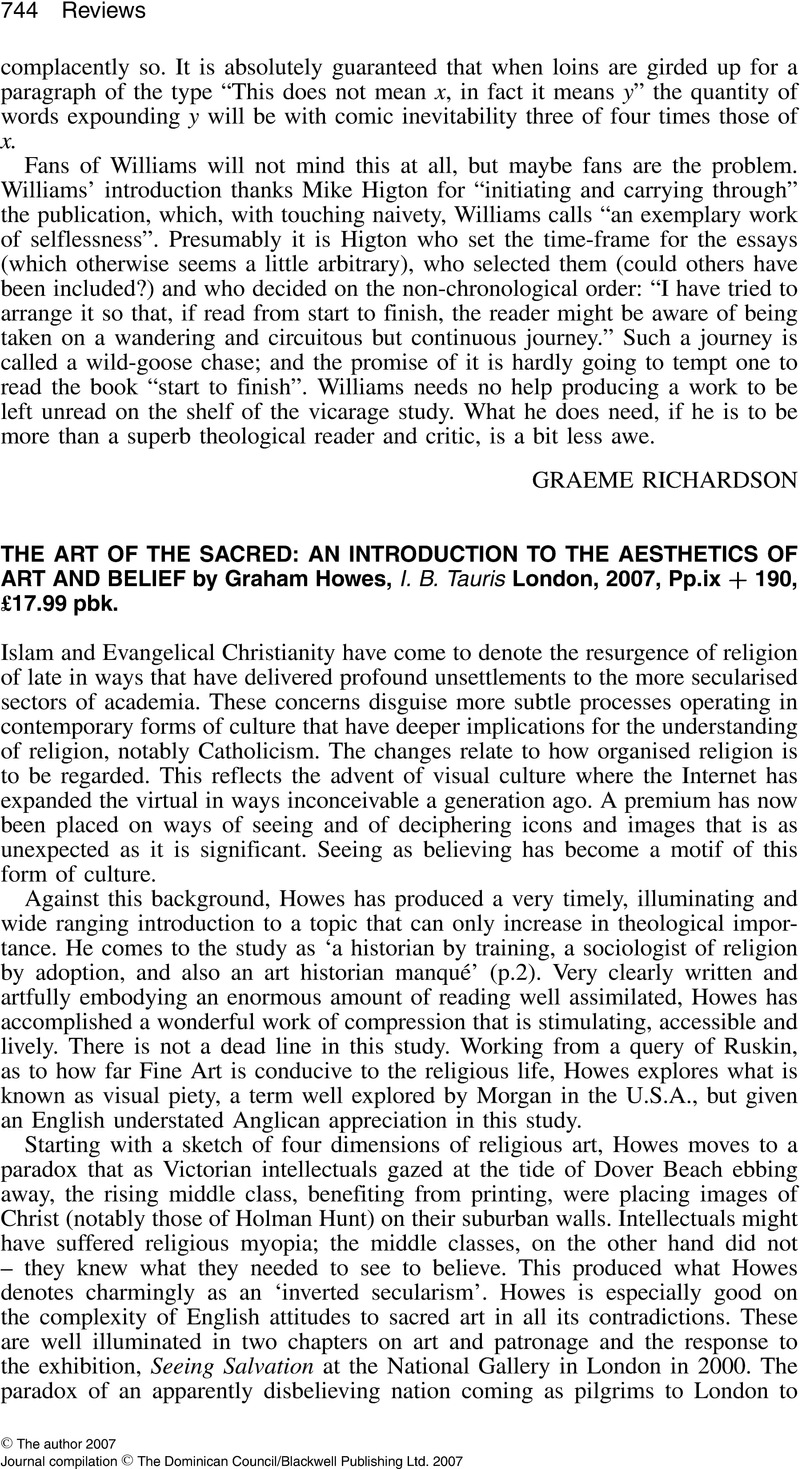No CrossRef data available.
Article contents
The Art of the Sacred: An Introduction to the Aesthetics of Art and Belief by Graham Howes, I. B. Tauris London, 2007, Pp. ix + 190, £17.99 pbk.
Review products
The Art of the Sacred: An Introduction to the Aesthetics of Art and Belief by Graham Howes, I. B. Tauris London, 2007, Pp. ix + 190, £17.99 pbk.
Published online by Cambridge University Press: 01 January 2024
Abstract
An abstract is not available for this content so a preview has been provided. Please use the Get access link above for information on how to access this content.

Information
- Type
- Reviews
- Information
- Copyright
- Copyright © The author 2007 Journal compilation © The Dominican Council/Blackwell Publishing Ltd. 2007

